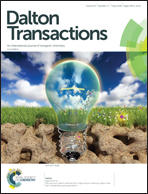Captivation with encapsulation: a dozen years of exploring uranyl peroxide capsules
Abstract
Uranyl peroxide clusters containing from 16 to 124 uranyl ions self-assemble in aqueous solution and exhibit tremendous topological complexity. Most of these clusters are cages, with the inside and outside surfaces passivated by oxygen atoms that are triply bonded to U(VI) cations (yl oxygen). It has become increasing apparent that the counter cations associated with these anionic cage clusters impact their assembly, topologies, and behavior in solution, including aggregation and aqueous solubility. Here we review the chemical compositions and topologies of uranyl peroxide clusters. We focus attention on the role of counter cations in cluster assembly, the properties of clusters in solution including supramolecular assembly, thermodynamic studies, and endohedral encapsulation. We also review the most useful solution characterization techniques of the counter cations and counter cation-capsule interactions. Potential applications in nuclear fuel cycles are discussed, including exerting nanoscale control of actinides to revolutionize separation technologies and provide novel pathways to nuclear materials including fuels, and an improved understanding of the transport of uranium in various systems. Finally, we elucidate some future directions.

- This article is part of the themed collection: 2018 Frontier and Perspective articles


 Please wait while we load your content...
Please wait while we load your content...
